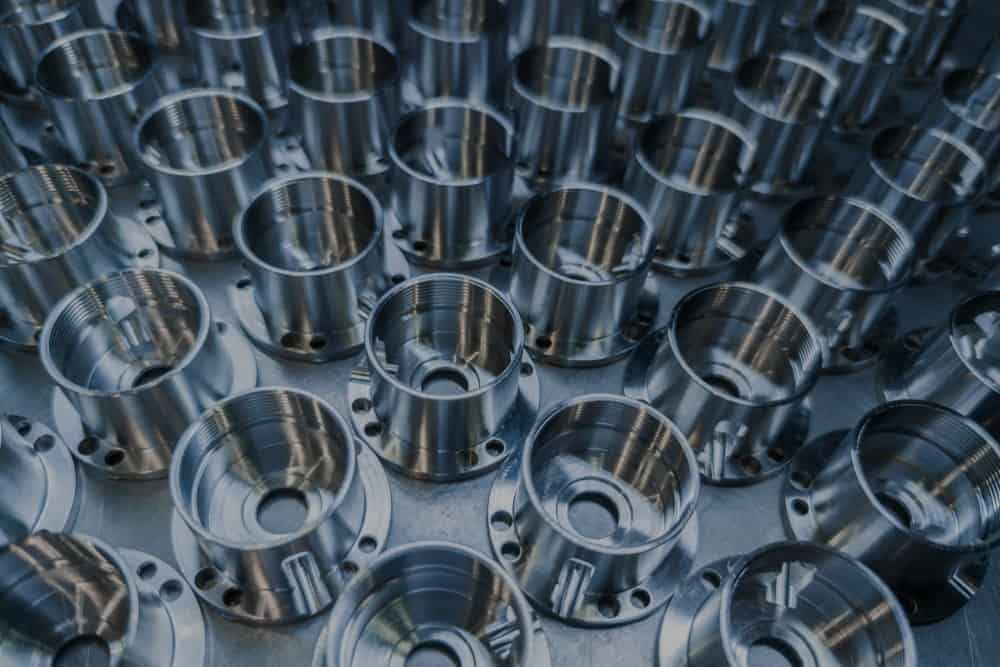

Previously published on fastradius.com on September 7, 2022
The post-processing stage of a CNC machining project is arguably one of the most crucial, as it preps and puts the finishing touches on your part. There are numerous post-processing options available, and determining which is best for your part depends largely on what material it’s made of and the purpose of the part.
Passivation is one of many final treatment options for materials that can significantly improve the quality and performance of a machined part by creating a protective layer that safeguards the part against corrosion.
Passivation is a chemical finishing process often applied to materials such as stainless steel, but it may also be used on other alloys and metals, including aluminum. After being thoroughly cleaned to remove debris or other potential impurities, an oxidizing agent, typically nitric acid or citric acid, is applied to the material’s surface, creating a passive oxide film that strengthens its corrosion resistance.
While stainless steel is inherently corrosion-resistant due to its higher chromium content than other alloys, it is still susceptible to rust over time, especially if iron contaminants on its surface are exposed to water. This oxidation can create rouging, which displays as reddish-brown deposits on stainless steel. Etching, pitting, and frosting may also be signs of localized corrosion that should be addressed before they cause operational issues.
Passivation can help deter the development of rouging and rust, and when done correctly, it can even be used as a proactive measure to reduce the need for frequent maintenance.
Practical applications of passivation
The passivation of parts used in highly regulated systems in the aerospace and medical industries is vital due to the critical roles these parts often play. When there is little room for error, components must perform optimally, and passivation has a crucial role in enhancing the lifespan and operation of a part.
For example, the pharmaceutical and medical industries operate under strict regulations to ensure patient and product safety. Maintaining a pristine environment and using precise, high-grade tools are of the utmost importance. Therefore, many components must undergo passivation to decontaminate and to guard against rust and other corrosion.
Below are just a few other practical applications where passivation can be used to discourage corrosion:
Passivation offers a way to control the quality of your end product so you can have confidence in knowing the parts you’re using will last.
Passivation is a practical, precautionary measure that can extend the lifespan of parts and their systems. However, while there are not many, there are a few drawbacks to the passivation process to keep in mind:
The main benefit of passivation is corrosion resistance, but there are a few other additional advantages:
Passivation should be considered a post-fabrication best practice for CNC machined parts. While passivation does occur naturally in chromium-rich alloys such as stainless steel, welding, machining, and engraving during the fabrication process can introduce contaminants that compromise the metal. Passivation’s multi-step process involves rigorous cleaning to remove impurities such as free irons that can make the parts susceptible to corrosion.
For heavily regulated industries that require meticulous precision and tighter tolerances, such as the CNC machining of aerospace parts, passivation is not only good practice — it’s essential for increasing the durability, safety, and reliability of components.
Passivation can be necessary to ensure the resiliency of your parts, systems, and product quality. Working with a team of specialists who understand the passivation process and are meticulous about their services will ultimately determine the effectiveness of your passivated components.
At SyBridge, we understand that precision and reliability are critical. With our team of experts on your side and advanced digital tools that make manufacturing easier, your parts can go from design to delivery with accuracy and speed. To get started, create an account to put the power of cloud manufacturing at your fingertips or contact us to learn how SyBridge can optimize your manufacturing operations.
Forget typical cycle times. We're pushing the boundaries of conformal cooling. While traditional approaches deliver…
Forget typical cycle times. We're pushing the boundaries of conformal cooling. While traditional approaches deliver…
From left to right: Brayden Janak (apprentice); Logan Vifaquain (CNC machining, Programming and CMM); Ron…
SyBridge Technologies is proud to announce we have been awarded the 2023 General Motors Supplier…
Today, designers and engineers are accustomed to working with digital tools in their day-to-day jobs.…
Optimizing Your Injection Molding Process for Cost-Effective Manufacturing Excellence In today’s competitive landscape, manufacturers are…